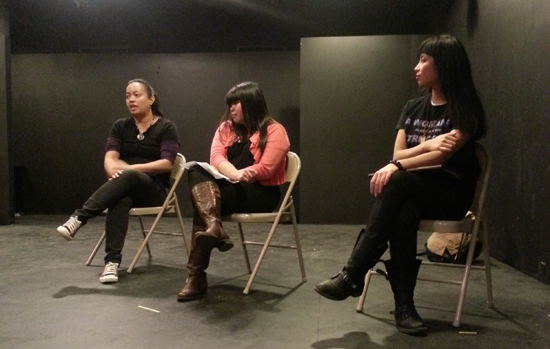This speech was originally given by staff member Gecile Fojas at our March staff meeting. She was assigned the speech as a staff development project.
I’m someone who often has trouble being courageous. I hate feeling vulnerable and being subject to scrutiny. I hate being judged. It makes me feel self-conscious, inadequate and makes me feel less than what I’m really worth.But all of this goes away when I take a step back, channel my inner Beyonce and tell myself, “I am a woman, an agent of change, and someone working on taking their passion and wielding it into power.”
350,000 females die annually from complications during pregnancy or childbirth. 99% of these deaths occur in developing countries, like the Philippines. The National Statistics Office reports 10 maternal deaths per day, leaving more than 30 children motherless. Having a mother around is pretty important for a new born not just for reasons like breast feeding, but the bond between a mother and child can be factor in life or death. When a new born is neglected, a child can stop eating, withdraw, “lose hope” and “lack the impetus to thrive. So in essence this bond creates a resilience in children helping them to survive. Also, the first 2 months after childbirth are very critical months for both mother and child.
Women are dying from things that are for the most part preventable. Dr Mahmoud Fathalla, chair of the WHO advisory Committee on Health Research, once stated that societies are at fault for the deaths of women and mothers because they “have yet to make the decision that [women’s] lives can be saved.” It’s harsh, but true. Most deaths are caused by things like hemorrhage, sepsis, unsafe abortions, obstructed labor and hypertensive diseases of pregnancy. ALL of these things are avoidable with access to adequate reproductive health services, equipment, supplies and skilled healthcare workers. The issue around the world regarding women’s health isn’t just about gender equality, it’s also about accessibility. There’s a huge disparity between women in the rural areas versus the urban, and the urban middle class and the urban poor.
Taking care of women make for stronger societies and healthier children make for surviving societies. If you want to make the world better or see change or get shit done, invest and fight for your women.
To my handsome men in the room. You have not been forgotten. You are just as important as the women I fight for. While there are men that bring women down, there are men, like you who build us up. I want to remind you that you are not the enemy, you are our counterpart.
We must build solidarity not just amongst women but amongst ALL people. Our (men and women) enemies are the lost souls that lack humanity and a conscience, but mainly an understanding that life is to be cherished and not tarnished by hate or hurt. We must fight to help them find their way. As leaders, we need to help guide by educating and empowering, because at the end of the day that’s how we will be able to take action, make change and RISE.
Love fiercely, find strength, be courageous and from there take your passion, wield it into power and make change. I am a strong and beautiful woman working being on becoming fearless and more courageous.
Even if it’s not for women, you should still fight for something that you feel passionate about. Fight because it’s better to fight and fall, than to live without hope.
I’m fighting right now, just by speaking in front of you.




